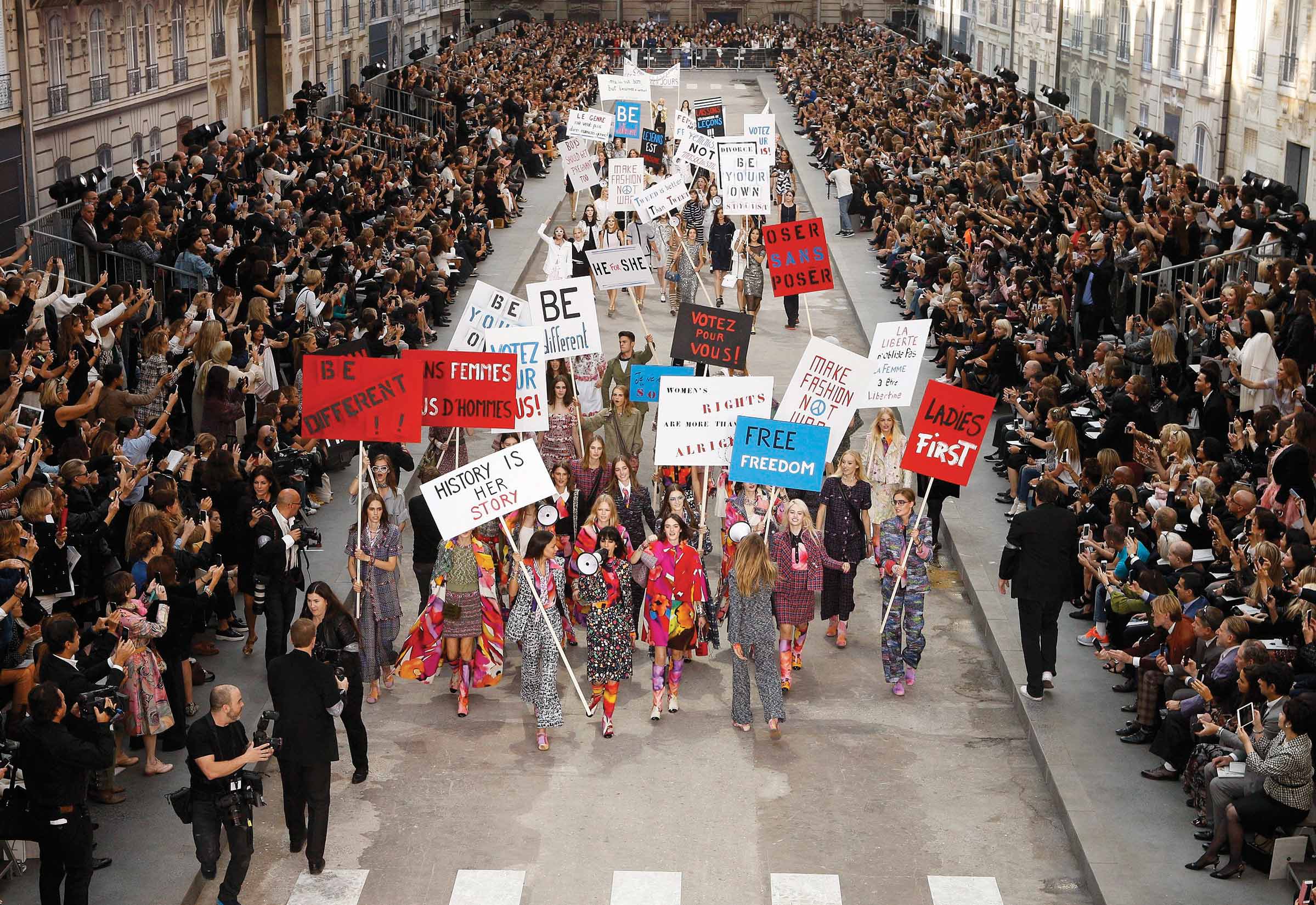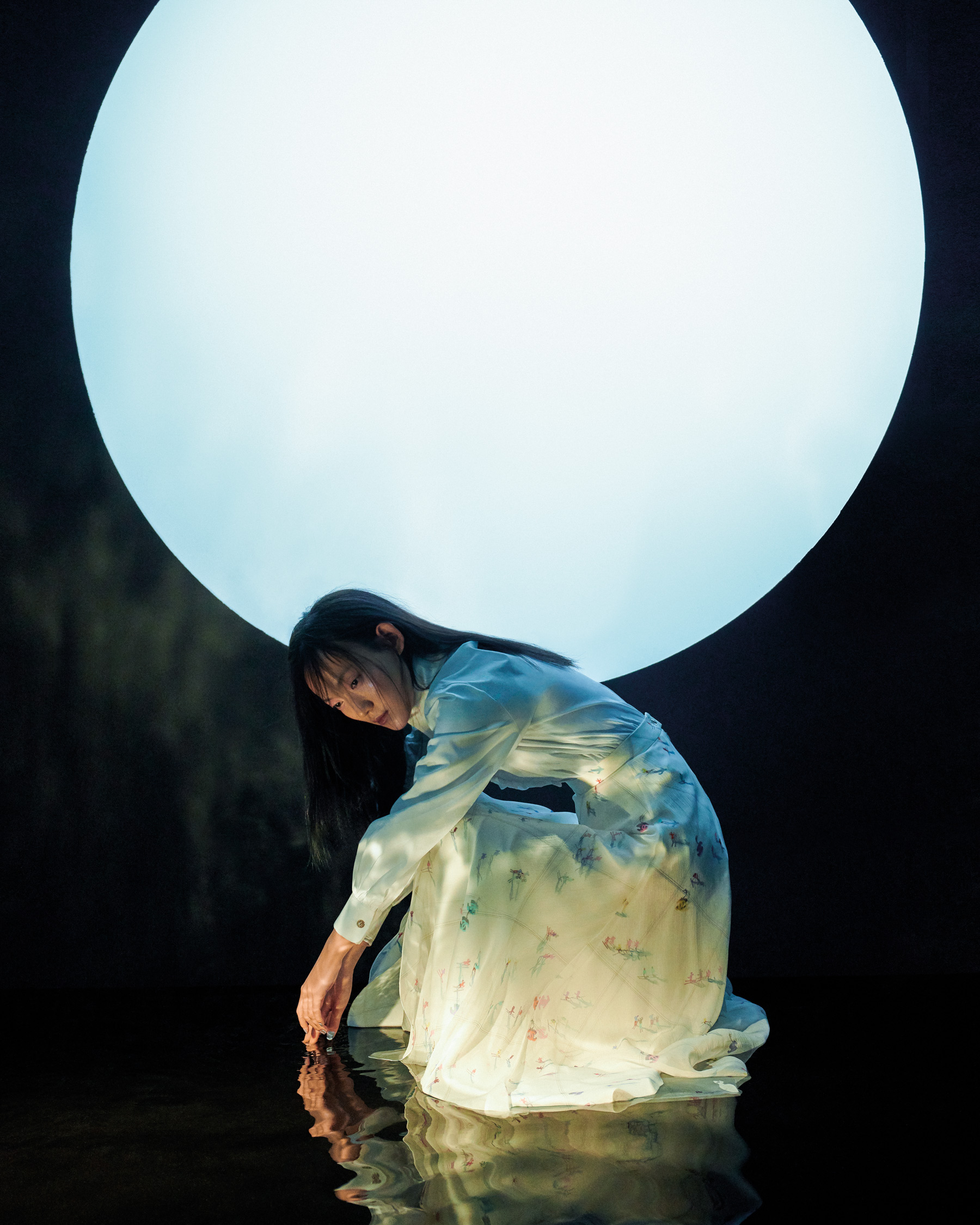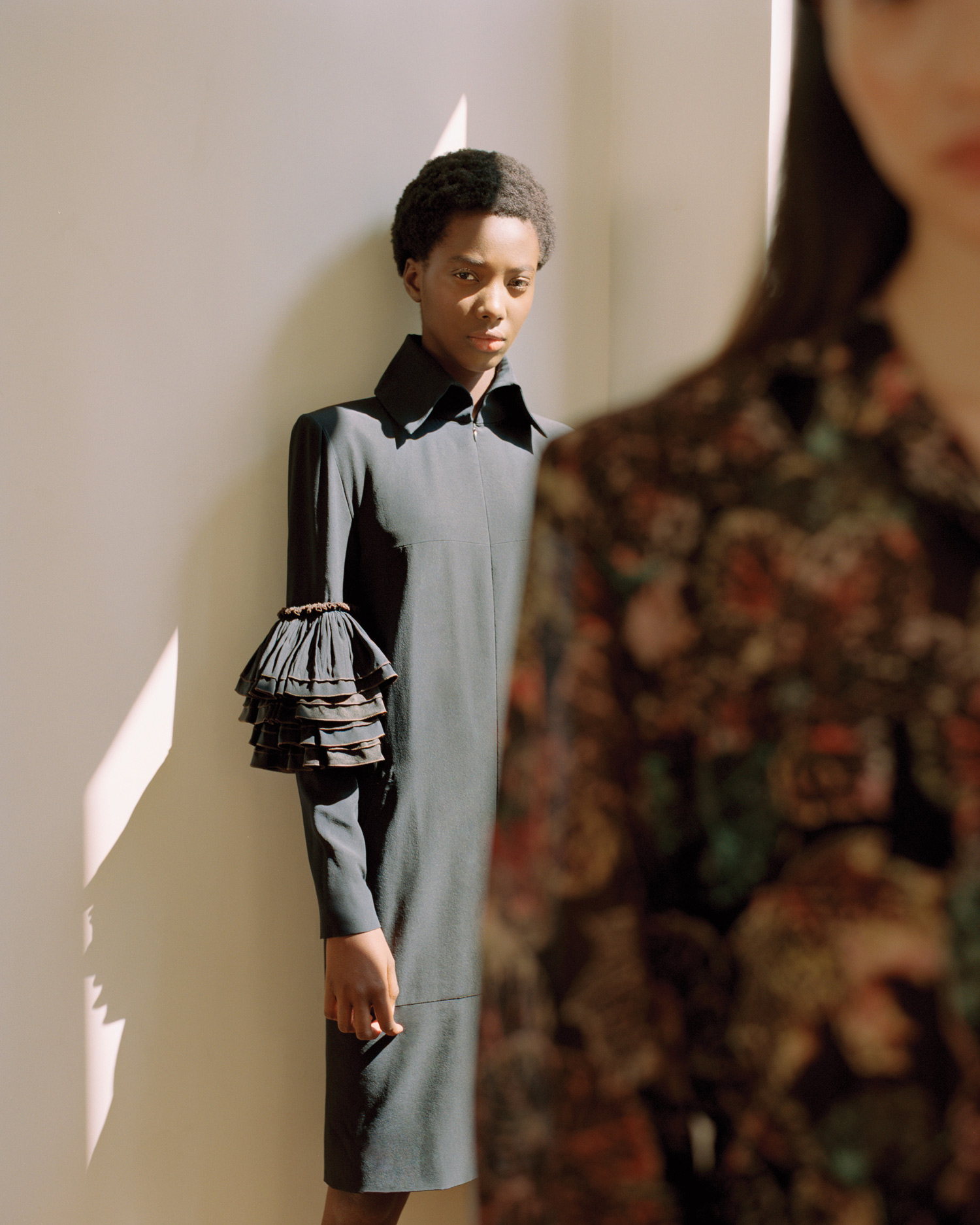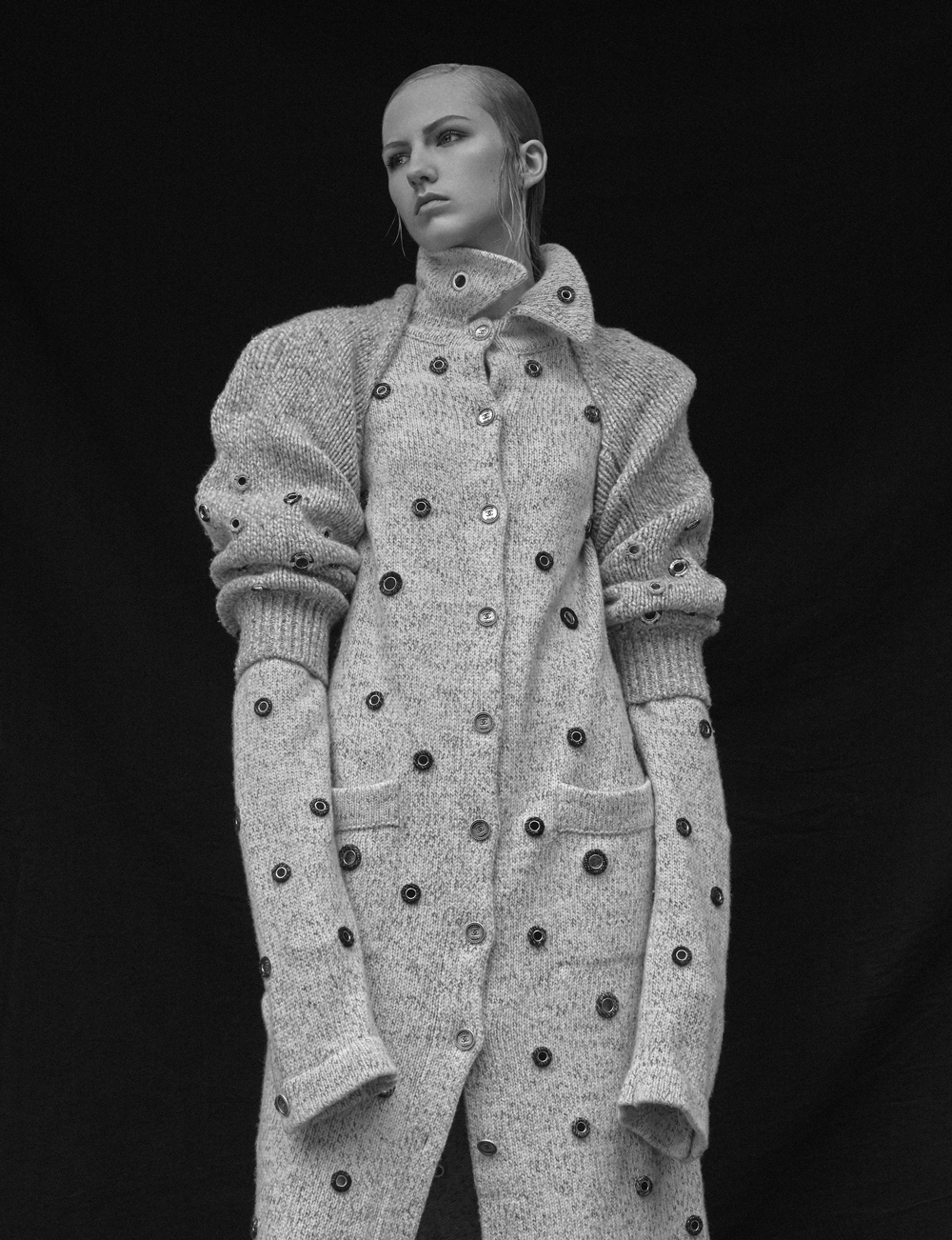When Cara Delevigne and Gisele Bundchen came marching down Boulevard Chanel last September, most of the audience looked on with mild surprise and amusement—reactions which decidedly would not have been appreciated by a real feminist riot. The following days saw various fashion insiders and media agencies, from The Guardian to Style Bubble’s Susie Lau take a stand on the potential social implications of the Chanel show, cumulating in an inspiring discussion that was arguably more dramatic than the show’s faux-protest finale.
Four months on, the debate seems to have whittled down to two essential yet endlessly complex issues—first, was the show’s explicit incorporation of feminism appropriate, and second, was it constructive?
The first controversy is fundamentally one of principle. Naysayers argue that the collection's presentation trivialized the issue of female oppression, compromising on its overarching objectives as a political movement. Following the show, Lagerfeld opined with characteristic impenitence that he intended his interpretation of feminism to be 'something light-hearted, not a truck driver for the feminist movement.' While some shrugged the comment off as an artist's assertion of creative agency, many others took deep offence, affronted that Lagerfeld was willing to represent the ongoing subjugation of women in such a cavalier tone. Fashion darling, Susie Bubble, picked up on the disconcerting relationship between commercial and political interests, questioning in a comprehensive post titled “I Doth Protest”, why ‘pointless activism was being used to sell clothes, when elsewhere in the world, real issues are being fought for with blood, sweat and tears?’
Another recurrent gripe amongst the show's critics seems to be the signs which were used during the ending protest. Slogans like “Make Fashion not War” and “Boys should get pregnant too” were received as unbecoming caricatures of the feminist movement, while others such as “Féministe mais Feminine” (Feminist but Feminine) were accused of pandering to misogynistic rhetoric.
Recent years have seen laudable progress made in the reclamation of fashion for women, exemplified perhaps, by Rick Owen's viciously glorious Spring/ Summer 14 stepping crew. Yet, in spite of these moments of genuine reappropriation, it remains dishearteningly true that this is an industry still deeply preoccupied with perfecting female desirability. When Chanel conjuncts “Feminism” with “Feminine”, it reads as a concerted attempt to defang the image of the angry feminist, to give her a makeover à la 90s chick flick so that her intellectual enlightenment becomes something attractive rather than threatening. What seemed to be orchestrated here was not the reclamation of fashion for women, but the repackaging of feminism for men. Rhiannon Lucy Cosslet from The Guardian delivered one of the most biting yet compellingly accurate remarks of the post-mortem when she wrote that, 'the slogans are laughable. If you were to devise a talking feminist Barbie doll, this might be its inner script.'
If it is any consolation, the patent rights for a feminist Barbie certainly do not belong to Chanel. For years now, businesses have been struggling to make feminism palatable so as to maintain a viable market. Unfortunately in doing so, they often depoliticize the movement, inadvertently contributing to the entrenchment of patriarchal control. What feminists have tried to explain time and time again is that a movement for women's rights is not meant to be comfortable; it is meant to disconcert, confront and provoke conservative sensibilities. Models giggling while chanting 'What do we want? Tweed! When do we want it? Now!' is not an appropriate call-to-arms because it stylizes the feminist movement as "cute" rather than authoritative.
Fashion insiders have lamented that this faux-pas stings with particular intensity because the actual Spring/ Summer 15 collection is such a beautiful piece of work. Psychedelic splashes of colour on tweed, khaki jumpsuits, cropped jackets, low-heeled boots—beyond Chanel's usual aesthetic precision, these clothes were beautiful simply because they emphasized a functionality and invoked the autonomy, nonchalance and dignity of a working woman. Unfortunately, the artisanal merits of the collection were difficult to appreciate when shrouded by the show's faux-feminism. As Susie Bubble enunciates, any woman 'rich enough to buy Chanel with her own hard-earned money will also be smart enough to know when she is being played by a man.'
True enough—however, an argument on the public role of feminism will always be disputable because there is never a single voice with the legitimacy to define what or how feminism should be practised. Cathy Horyn, fashion critic extraordinaire renowned for her deliciously brutal honesty, responded to questions on the controversy by tweeting 'my knickers are not in a twist! It's a show!' Has there been an over-reaction? Since its genesis under Gabrielle Chanel, this has been a fashion house that holds creative audacity as one of its guiding tenets. Lagerfeld not just alludes to, but embraces this boldness in the conceptualization of all his shows, from the wryly orchestrated Chanel Supermarket to the closing of his Fall/ Winter couture collection featuring pregnant model, Ashleigh Good. Such considerations are why for many Chanel fans, the internal debate over the propriety of this Spring/ Summer show is not only irresolvable, but also somewhat banal.

What then, of the constructiveness of the show? Regardless of its presentation, did that protest not help to elevate the visibility of feminist concerns? Cosslet, in her piece for The Guardian, acceded that 'there are still some who would rather feminism remained the preserve of the academic, of the white, middle-class journalist, not the schoolgirl on the street and certainly not the supermodel.' Even their fiercest opponents cannot deny the formidable clout that Chanel wields in the fashion industry and cultural spheres beyond. If the show, viewed by millions, contributed even mildly to the incorporation of feminism into our everyday psyche, then surely, that is something to celebrate. If the image of supermodels marching for feminism can be an entry point to the normalization of feminist discourse in popular culture, then surely, it is worth some commendation.
Still, in any conversation on cultural consciousness, it always pays to consider the words of Alexander Pope who warned that 'a little learning can be a dangerous thing.' The feminist references in Chanel Spring/ Summer 15 may have been explicit, but they were certainly not complete. With only twelve models of colour in a selection of eighty-five, the show's demonstration of female empowerment felt abjectly white. The sense of solidarity between the models who walked down the runway in pairs or groups was undercut by the overwhelming absence of models of colour and plus-sized models.
All this has prompted pundits to question if Lagerfeld was serious about his political intentions, or, as Jezebel’s Julianne Shephard suggested, if he was merely 'responding to what he perceives as a trend.' The idea that feminism was being utilised as a loud hailer for Chanel, rather than the other way round, is what made this show so contentious.
Even if all the misgivings on the show’s presentation can be put aside, one question remains—was it really necessary? If Chanel was genuinely interested in honouring the legacy of female liberation upon which it was founded, should they have taken institutional, rather than presentational gestures? Susie Bubble wrote that ’Even a simple statement such as, ‘We have equal pay regardless of gender at Chanel Ltd.’ would have added more credence to what they sent down the runway.’ Here, the style blogger delivers a poignant reminder of the wider tension that lies between the fashion industry's aesthetic and corporate functions. It is crude, unjust, yet embarrassingly accurate to say that fashion is men profiting at the expense of women. Apart from the objectification and narrow projection of physical beauty, there is also the literal, and perhaps more insidious reality that most of the industry's commercial returns feed the pockets of male CEOs and shareholders.
The furore brought against Lagerfeld for the Spring/ Summer 15 show may have been potent, but the accusations raised were certainly not new, nor unique. The industry, as a whole, faces a slew of structural flaws which make it challenging to reference feminist causes with genuine empathy and relevance. Knowing that this is an industry puppeteered by men and that in many ways, it is still constructed in the male gaze, will always prompt feminists to react to fashion-feminist projects with some degree of squeamishness.
Hence, despite its scandalous reception, Chanel's Spring/ Summer 15 show represents a state-of-mind epidemic of an industry. Acknowledging this does not mean that we dismiss the impropriety of the show's presentation, or that we ignore the stunning, empowering work of fashion houses who prove to be exceptions to this rule. Just a few days after Chanel’s show in Paris, Stella McCartney came under fire for saying that 'strength on its own in a woman is quite abrasive and not terribly attractive sometimes.' News agencies took that quote and ran with it, conveniently dismissing McCartney’s preceding explanation:
"To me, only really a woman can do that, only really a woman can have that fragility and it has such a strength to it and the collection is very much about that."
Stella McCartney's linguistic misstep is quite unlike Lagerfeld's staged protest and the two should not be discussed in the same breath. Making these distinctions is important because it sharpens and elucidates the boundaries of what we, the masses—shapers of cultural consciousness, define as appropriate art. We hold a responsibility as consumers to clearly and thoughtfully articulate the rules we want to play by, to enact the infrastructure of the ideological environment we wish to inhabit. These handles are what inform the creative decisions of institutions like Chanel, though they similarly bear an onus to be receptive to cultural sensitivities and employ them such that an empathy with audiences can be forged. What Paris Fashion Week in 2014 showed was that unless fashion houses are able to align themselves to the political nuances of the issues they reference, they risk provoking the increasingly vehement and on occasion, stringently unforgiving protests of people en masse.





